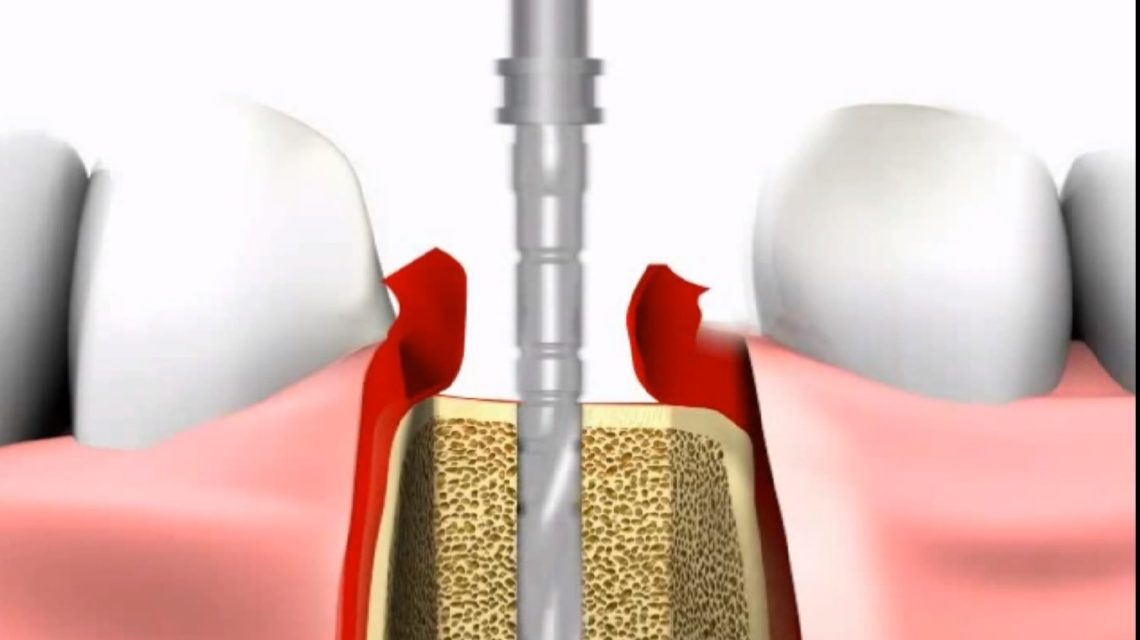

As more and more people in the local Bristol and Portishead area opt for dental implants we thought it was a good opportunity to explain more about the procedure and how it works if you wish to replace missing teeth, don’t worry though, we won’t be showing any images of surgery or blood, we will keep it simple and friendly.
If you want to know more about why dental implants are one of the best treatments to replace missing teeth, please do take a look at this previous blog post which looks at things like ‘why are dental implants the preferred choice’, ‘what is a dental implant and how they are used’.
The first step in replacing missing teeth with implant is to have an initial assessment at your dentist. This initial assessment will go through the risks of implants and talk to you about the alternatives. Dental implants are not suitable for everybody and this initial assessment will begin the process of working out if they are right to you.
After the initial assessment you will normally be required to have a range of radiographic scans. These will probably be a combination of conventional x-rays, panoramic x-rays and possibly CT scans.
Conventional x-rays normally do not have enough information to make a full decision about implants, but they can act as a starting point to decide if an implant will fit in the space. To augment conventional x-rays we often use panoramic x-rays. This type of x-ray spreads out your entire jaw into a straight line enabling us to get a larger scale idea of where the implants may be able to go.
One of the most useful types of imaging used in dental implants is a CT scan.
This type of scan allows your dental implant dentist to make accurate measurements using digital software, often the dental surgeon can virtually placed the dental implant on the computer to test that the implant will fit precisely before doing any actual surgery. The CT scan also allows us to take things segments (see the bottom right-hand quadrant of the screen shot), these small segments allow us to move through the jawbone in equal amounts to get very accurate idea of where all the nerves and bone are situated.
Using scans to this level of accuracy means the dental implant placement can be far more accurate especially in complex situations.
Once the initial imaging planning phase is over we can move on to the physical planning. This normally involves taking a dental impression and converting it into a plaster cast model. This is then sent to a dental laboratory who can extract any teeth of this model and to create a mockup of how the final restoration of your smile will look.
Sometimes it is possible for you to try in this mockup, although that depends on your exact situation and whether you are having teeth removed at the final dental implant placement or not.
The diagnostic phase is incredibly important and should never be underestimated, it is a vital stage in planning dental implants to ensure an accurate final result.
Once the diagnostics have been agreed and your dental technician, dentist and yourself are happy with how you will look we can move on to the actual dental implant placement itself. This will be done under a local anaesthetic but if you are particularly nervous or anxious of the dentist then we can also offer dental sedation, Overall the procedure should be quite comfortable and relatively painless. For more information on the pain of dental implants please do see our previous blog post. Sedation allows you to gently relax into your own world whilst you have your dental implant is placed.
Depending on the exact technique used you will often find that once the implant is placed into the jawbone that you will not be actually able to see it. It will be placed underneath your gum and allowed to integrate with the surrounding bone over the following 3-6 months. After this integration has happened you will return to the dental practice and they will uncover the dental implant from beneath your gum. This is a very minor surgical procedure which again will be done under local anaesthetic.
Here is the animated video of how the dental implant procedure will work, it explains how the implant is placed into the bone and then how the final restoration is attached on top of this.
Once the Implant has integrated into the bone the file restoration can be placed on top. There is a complex arrangement of abutments and screws, the post which sticks out from the gum will be gently screwed into the dental implant itself. On top of this your new denture will either click into place or the Crown or bridge will either be bonded in place or screwed.
The whole procedure, from start to finish will typically take six months. This includes all of the initial consultation, the planning phase, the implant surgery and subsequent healing phase through to the final fitting of the new teeth.
Sometimes patients become quite anxious about having a new teeth as fast as possible at the final stage, often asking us to rush things through in one or two weeks rather than waiting three or four weeks. We strongly urge you to be patient at this time, working closely with the dental technician to ensure that you have a highly customised and aesthetic result is important to us, we can only achieve this if we take plenty of time to listen to what you want and then ensure that we deliver what you want.
Our dental practice in Portishead, Bristol is able to offer dental implants to replace missing teeth with either crowns, bridges or dentures. If you are suffering with gaps and would like to find out more about how you can smile again with absolute confidence please do give us a call and book for a free consultation with our treatment care coordinator.


BRACES


BONDING


Dental Health Plan
We are accepting new patients, book an introduction call today
Book An Introduction Call
Serious faces. Measuring tape out.
What could it be? 👀
Take a guess in the comments!


🪥 Simple steps for a healthier smile 🪥
In this video, Jessica shares her top tips on how to improve your oral hygiene at home. From brushing and interdental cleaning to small daily habits that make a big difference, she explains how to keep your teeth and gums healthy between visits to the practice.
A few simple changes can go a long way.
📞 Speak to reception if you’d like personalised advice or support.


Looking ahead with excitement ✨
New goals, fresh opportunities and plenty to look forward to — here’s what our team is most excited about in 2026. We can’t wait to bring you along for what’s next 🤍


Reflecting on a year we’re incredibly proud of ✨
From personal milestones to team wins, here’s what 2025 has meant to our Evolve team. Growth, gratitude and plenty of reasons to smile — we can’t wait to see what the next year brings 🤍


✨ Finance made simple ✨
In this video, Julie answers one of our most frequently asked questions: what finance options are available at Evolve?
From spreading the cost of treatment to finding a plan that works for your budget, Julie explains the options clearly and simply – so you can make an informed decision without any pressure.
If you’ve been putting off treatment because of cost, this one’s for you. 💙
📩 Get in touch with reception if you’d like to talk through your options.





